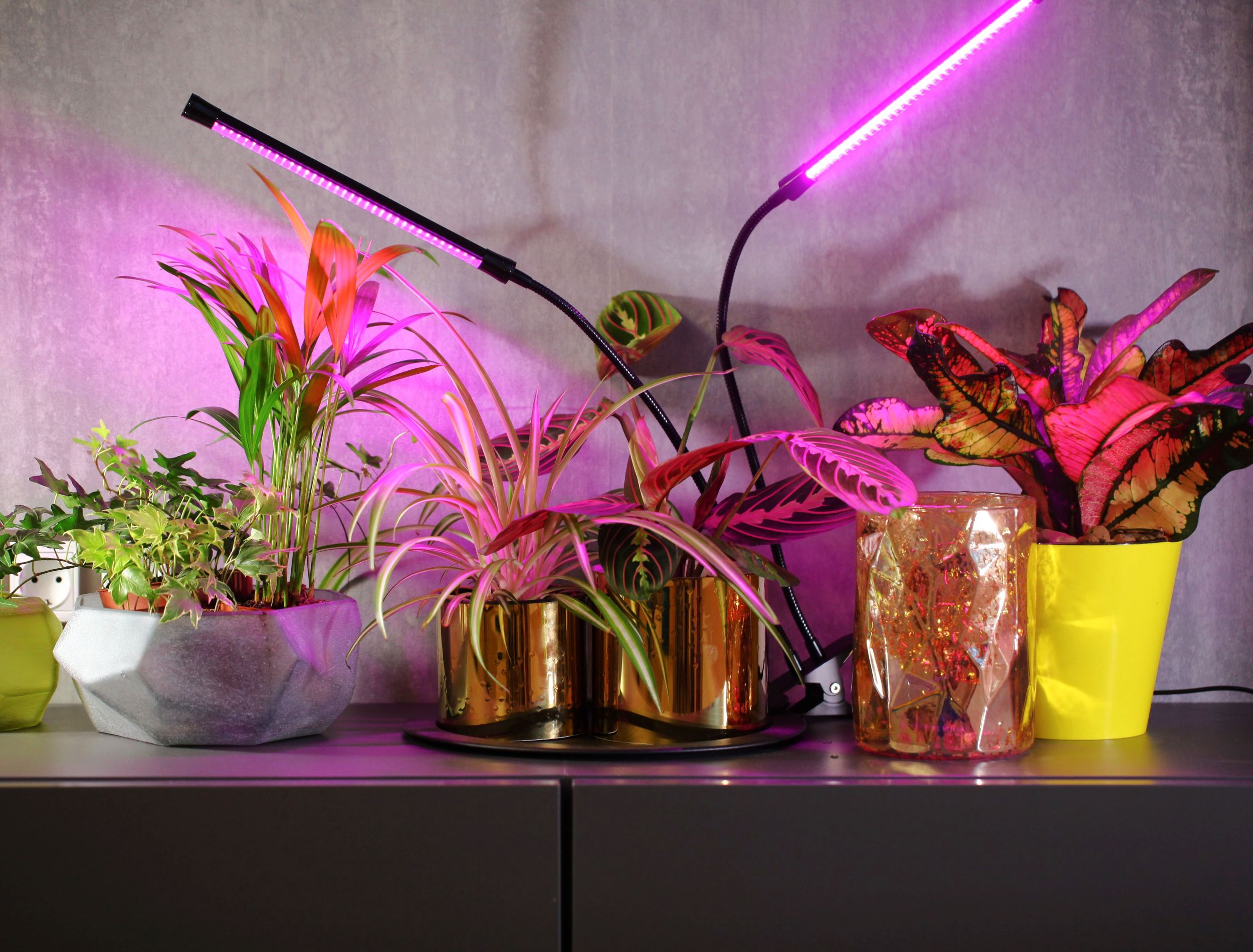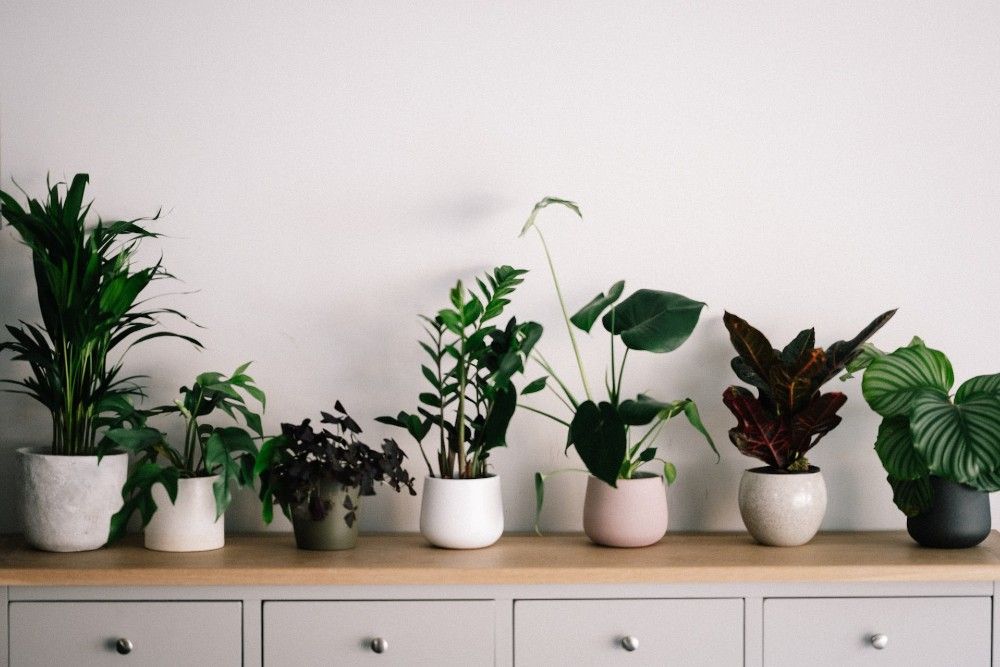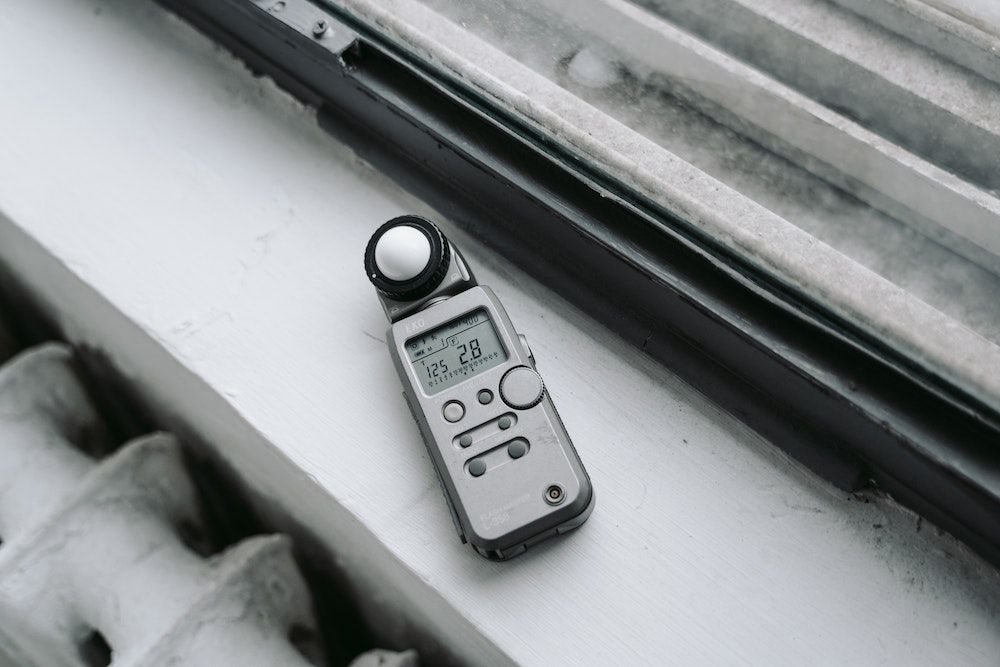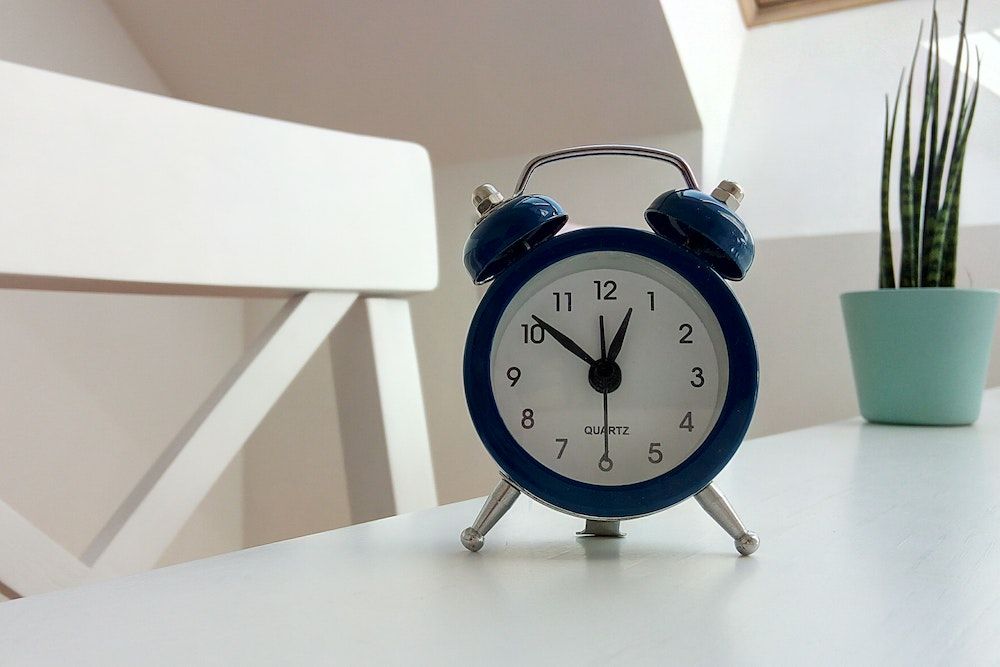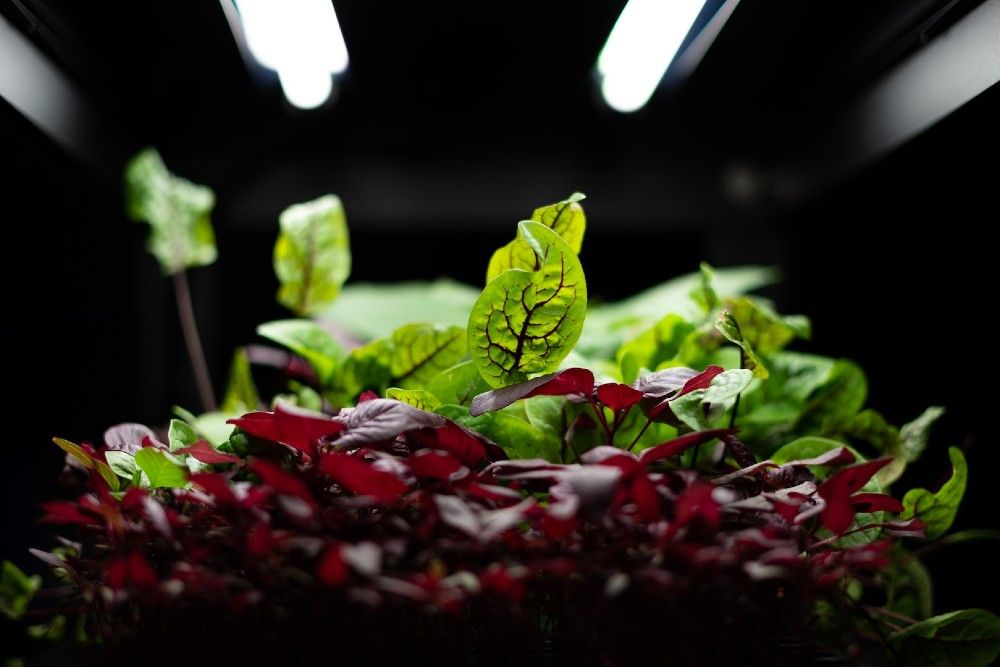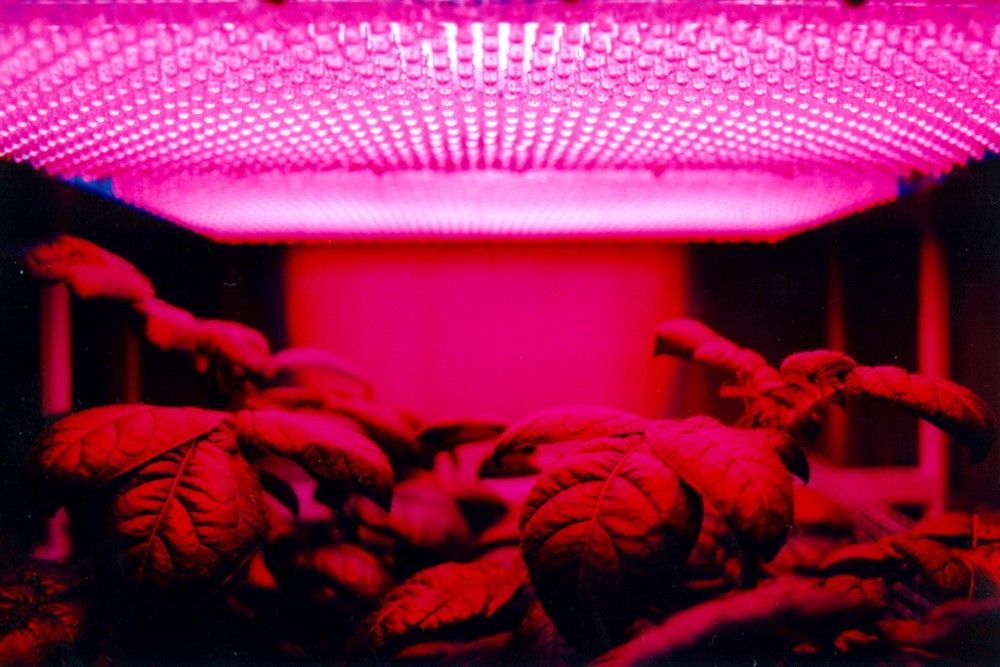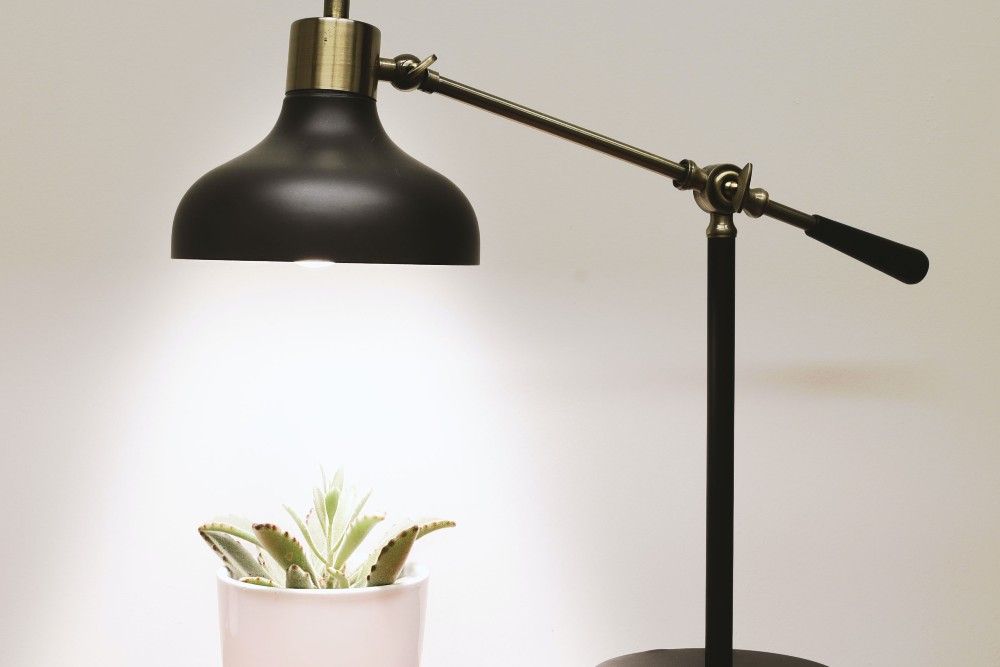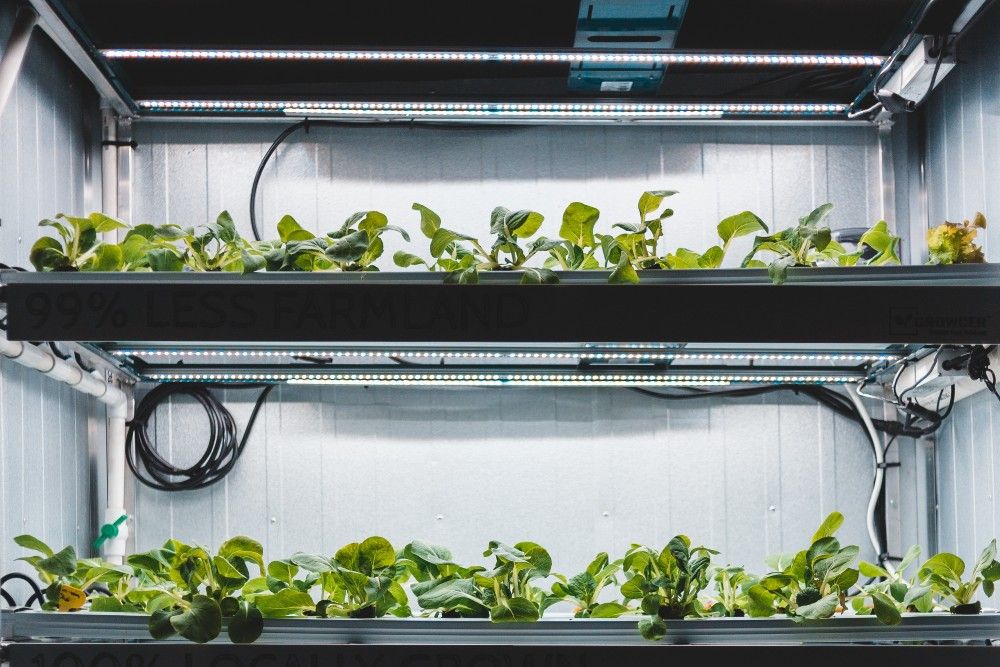It's no secret that plants need light to grow. Even low-light plants, like ZZ or snake plants, still require indirect light to thrive. When growing plants indoors, you have to take advantage of your brightest windows, but even then, sometimes more is needed.
Whether it's the dark days of winter, you've embarked on growing your indoor lettuce, or you've run out of room in your plant-filled haven, every plant enthusiast eventually needs more light. To help you with your search, here's a guide to choosing the best grow lights for your plants.
Signs That Your Plants Need More Light
Image credit: Annie Spratt via Pexels
Stunted growth is a tell-tale sign that your houseplants need more light. Plants that aren’t pushing out new leaves lack the energy provided by the sun. Flowering plants may fail to bud, and stems can become leggy. This is especially evident in plants like string of hearts where the long, narrow stems are bare with few leaves.
Fading of the leaves is another sign of inadequate lighting, and eventually, leaf drop; variegated plants may revert to solid green. On the other hand, you can differentiate plants that receive too much sunlight from their scorched leaves.
Determine How Much Light You Need
Image credit: Tima Miroshnichenko via Pexels
Once you know your plants need more light, the next step is determining where you are lacking. You may be able to spot the dark trouble areas in your home, but you can’t measure how much light you need with the naked eye. To measure the light your plants are currently receiving, you can use a basic lux reader app on your phone or a more advanced light meter reader, which you can pick up at the local hardware store.
These light readers are often in lux (lumen per square meter), which is approximately ten times greater than foot-candles. A foot-candle measures the amount of light from one candle that reaches a 1-square-foot area. Each plant will require different lighting:
- Low-light houseplants, such as pothos and cast-iron plants, need 50 to 250 foot-candles (500 to 2,500 lux) or 10 to 15 watts.
- Medium-light houseplants, such as Alocasias and fiddle-leaf figs, need 250 to 1,000 foot-candles (2,500 to 10,000 lux) or 15 to 20 watts.
- High-light houseplants, such as orchids and seedlings, need greater than 1,000 foot-candles (10,000 lux) or more than 20 watts.
Do these measurements a few times throughout the day to ensure your plants receive adequate light for the proper duration.
Note: Photographic light meters don't usually measure in foot candles, but if you want to use one, some do come with conversion charts.
Decide on Light Duration
Image credit: Enikő Tóth via Pexels
Another consideration when you choose a grow light should be the length of time you will have it running. This will have an impact on your electricity bill, as well as your schedule. Keep an eye out for grow lights with timers to automate your set-up. This will keep your plants happy, and you stress-free.
Most houseplants need an average of 14 hours of sunlight daily, with seedlings and flowering plants preferring even more sunlight. Long-day plants, such as begonias and African violets, prefer longer days than nights. Short-day plants, such as Thanksgiving and Christmas cacti, need shorter daylight hours to induce flowering. It’s important to note that despite these differences in light duration, the light intensity should remain the same.
If grow lights are going to be the only source of light for your plants, they should be on between 16 and 18 hours a day. Even if your plants have other light sources, providing them with brief periods of additional light is unlikely to help much. If you have determined your plants need extra light, opt for grow lights.
Choose the Type of Grow Light
Image credit: Philip Myrtorp via Unsplash
There are quite a few different types of grow lights from which to choose. LED, fluorescent, incandescent, and high-pressure sodium are the most common. LED is energy efficient, long-lasting, and emits low heat; It's a reliable and popular option regardless of the slightly higher upfront costs.
Despite its lower energy efficiency, fluorescent lighting has long been a trusted option for gardeners. Many plants, such as lucky bamboo, ZZ plants, and succulents, thrive in environments where fluorescent light is the only light source. This could be an easy switch if you already have fluorescent lighting in your home.
Incandescent lights are the cheapest option and may be an additional light source for plants. However, they aren’t energy efficient or long-lasting. High-pressure sodium and metal halide grow lights are more efficient than incandescent but are usually reserved for larger operations due to their size.
Check the Color Spectrum
Image credit: NASA Marshall Space Flight Center via Creative Commons
When choosing a grow light for your plants, it’s essential to know what quality of light your plants prefer. Sunlight provides all the colors in the rainbow, giving your plants the entire spectrum. However, plants primarily need red and blue light, so many grow lights offer only red, blue, and white lights or mixed/balanced lighting.
- Red light increases photosynthesis and helps with bud formation in flowering plants.
- Blue light is good for starting seeds, leafy greens, and foliage plants.
- White lights or mixed/balanced lights will work for your houseplants.
LED provides a broad spectrum of light ideal for all your plants. Always check the label with fluorescent bulbs as some only offer the blue spectrum, but many designed for growing provide both red and blue light. Incandescent lights provide primarily red light, which is much too hot for many plants, and low levels of blue light. High-pressure sodium bulbs offer a wide spectrum of colors and emit light over a substantial distance.
Choose the Right Size Light Bulb
Image credit: Eneida Nieves via Pexels
Choosing the right size light bulb for your space can sometimes be tricky, depending on the units of measure you’re using. To determine the light intensity needed in wattage by square feet, multiply the watts required by the square feet. For example, for low-light plants, 10 watts by 5 square feet is 50 watts. Fluorescent and LED lighting are often measured in watts, making this an easy conversion.
Keep in mind that if your plants are receiving light from outside, you need to account for that. A medium-light houseplant that is already receiving 500 foot-candles needs an additional 500 foot-candles, which might mean you only need a 10-watt bulb versus 15 or 20 watts.
For large grow spaces, or for plants far apart, you can split the wattage between multiple bulbs. The distance between your plants and the grow lights is important.
Consider Placement
Image credit: Erik Mclean via Pexels
Once you determine the intensity of light best for your plants, you also want to be mindful of placement. Your grow light should be approximately 6 to 12 inches from your plants. However, this will vary depending on the type of light and plants you are growing. Foliage plants, for example, don't need as much light and prefer to be back 12 to 24 inches from grow lights.
You will want a plan for moving the lights as your plants grow. Fluorescent lights are often hung on chains for ease of moving up and down. Plants usually grow toward the light, so you may opt for one that's easy to adjust as your plant moves around. If your plant's foliage touches the grow light, it can scorch the leaves.
When placing your plants underneath fluorescent lighting, be mindful that the center of the bulb is hotter than the ends. Rotating your plants will ensure they receive even lighting. LED is a good choice for strips of lights in a grow cabinet or under the countertops as they don't emit much heat.
Light It Up
Light is the most important factor affecting plant growth in houseplants, and it’s the first thing to check if your plant is declining. This can be especially evident in the winter when homes receive less light. Choosing grow lights for your houseplants may seem daunting, but it doesn’t have to be; there are plenty of fantastic options.
What is your favorite houseplant grow lights? Share your experience in the comments!

